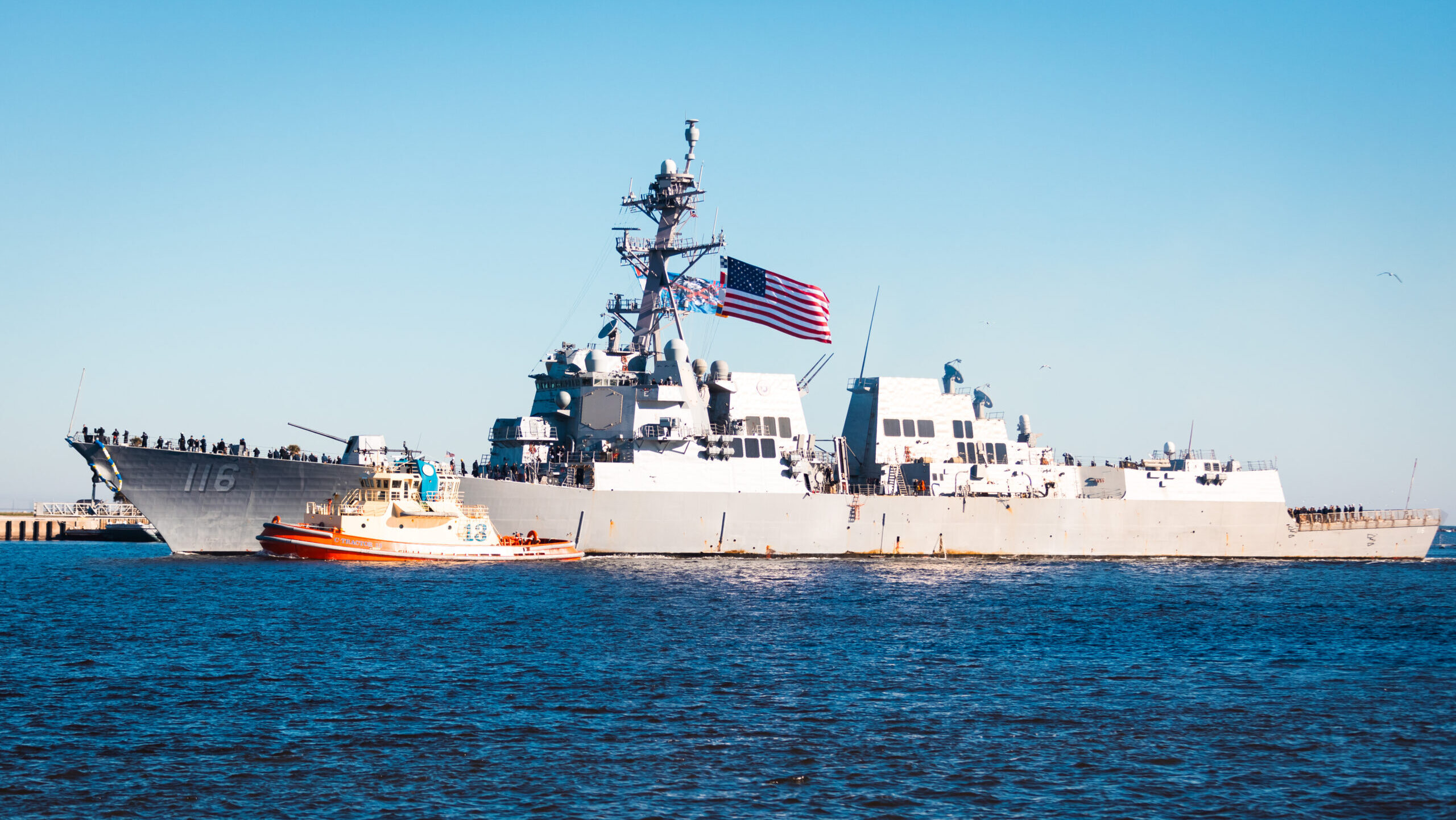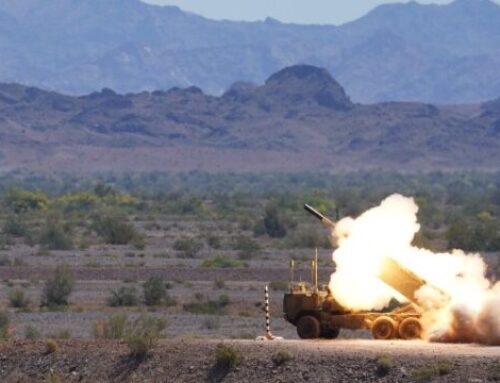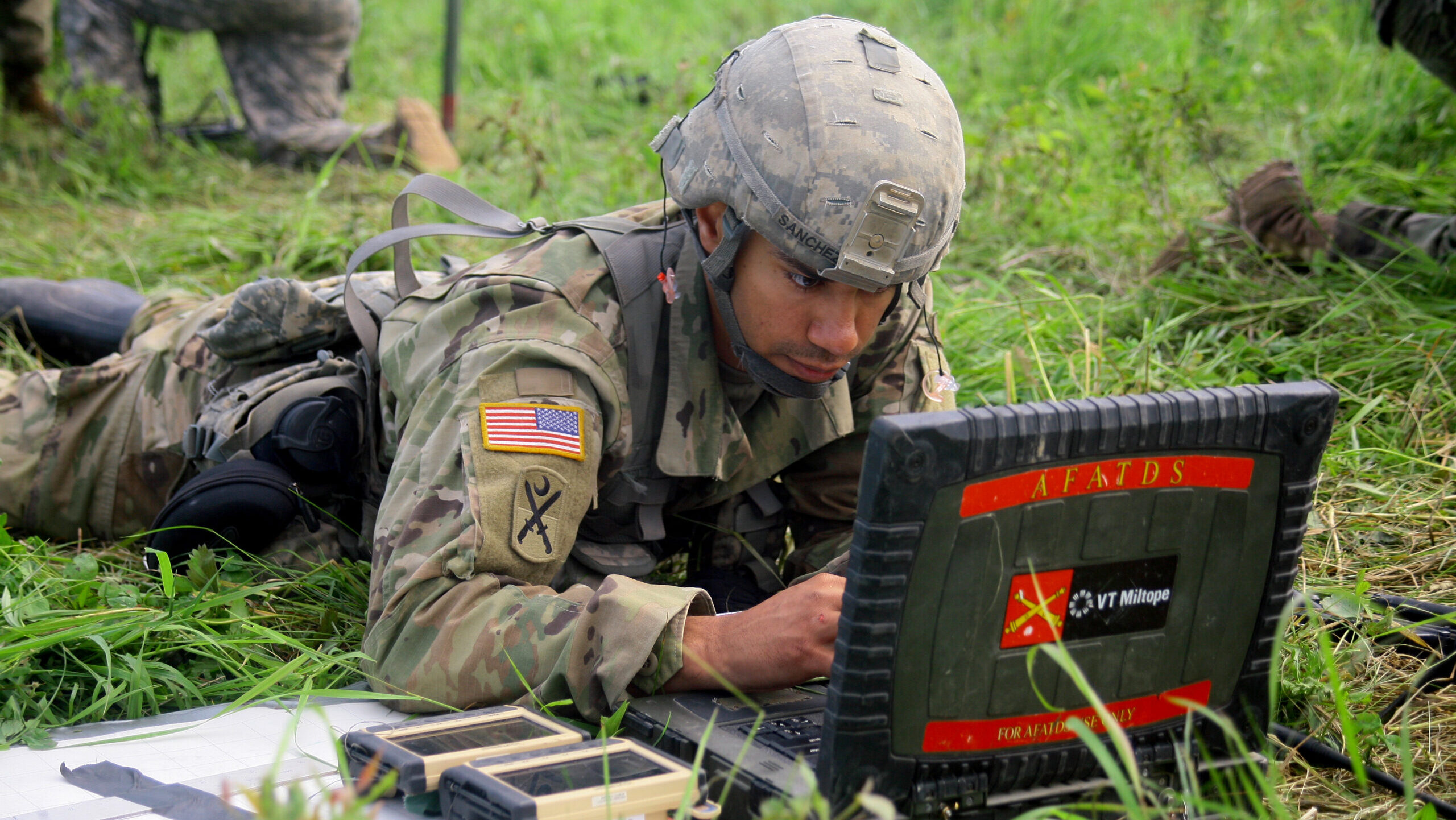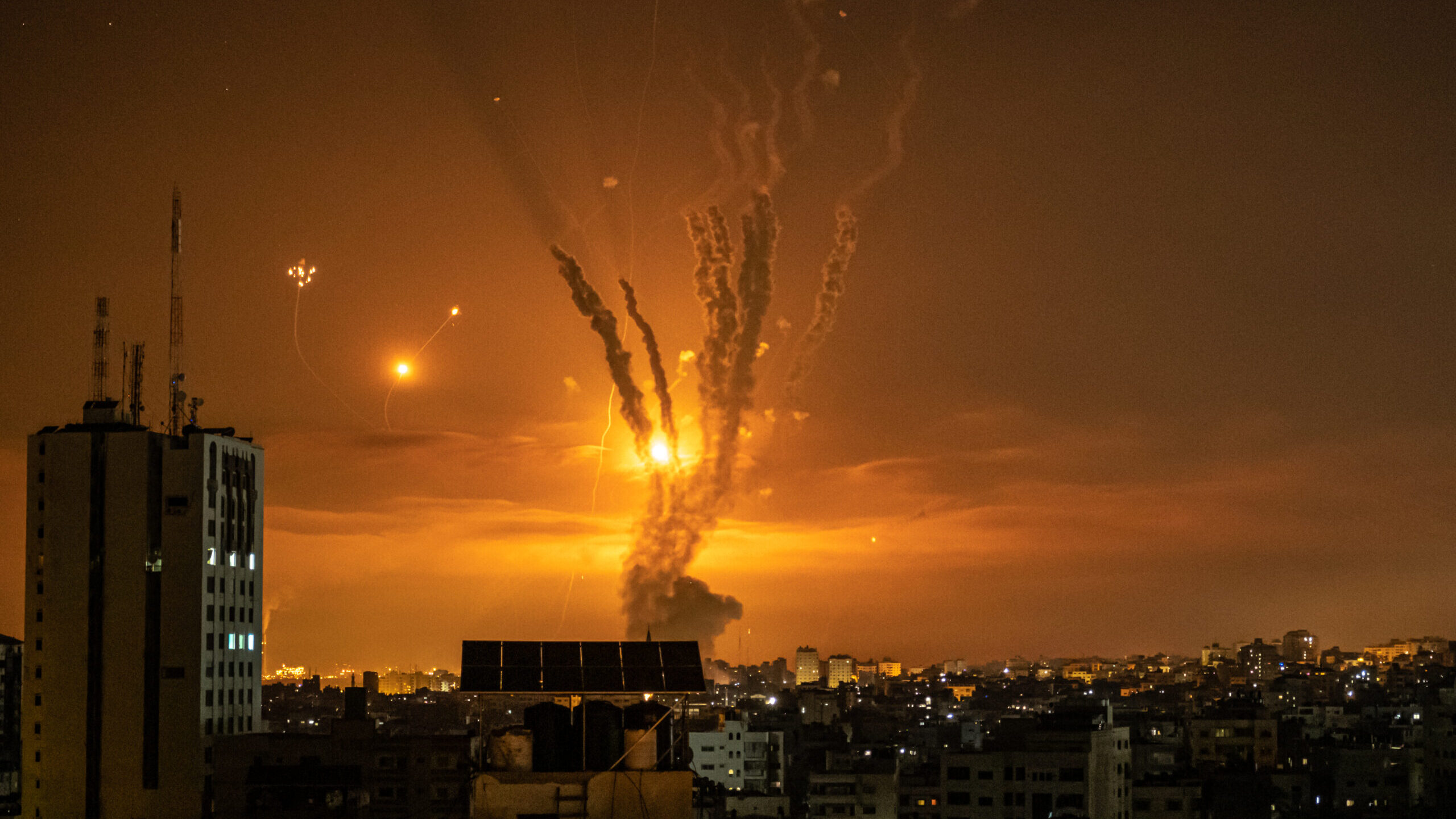The Arleigh-Burke class guided-missile destroyer USS Thomas Hudner (DDG 116) returned to Naval Station Mayport after an eight month deployment, Jan. 4, 2024. (U.S. Navy photo by Mass Communication Specialist 1st Class Brandon J. Vinson)
WASHINGTON — As Hurricane Milton barrels down on the Florida coast, the US military there is once again working to move assets, prepare personnel and lock down equipment to weather the storm — just days after it had to make similar moves ahead of Hurricane Helene.
Milton continued to gather strength Monday, rapidly swelling into a Category 5 storm. Current projections expect it to make landfall late Wednesday or early Thursday in the Tampa area, risking over 10 feet of storm surge for some areas still struggling to clean up from Helene’s aftermath.
Tampa is home to MacDill Air Force Base, the headquarters of US Special Operations Command. The base evacuated 12 KC-135 refueling aircraft to McConnell Air Force Base in Kansas and are keeping two in a hangar on site, according to Department of the Air Force spokesperson Rose Riley.
Riley added that the base will close Tuesday and personnel have been directed to follow local evacuation orders, though roughly 185 base personnel will work from an alternate emergency operations center at Raymond James Stadium, the home field of the Buccaneers that is also designated as a shelter and disaster response site by the Federal Emergency Management Agency (FEMA).
The 482nd Fighter Wing has additionally relocated seven F-16s from Homestead Air Reserve Base in the Miami area to San Antonio, Texas, Riley said. Patrick Space Force Base and Cape Canaveral Space Force Station on Florida’s east coast are currently in Hurricane Condition 4 status, according to Space Launch Delta 45. Riley said “tenant units have moved aircraft assets out of the local area,” though SLD 45’s website says that there are no mandatory evacuations as the storm is expected to considerably weaken by the time it reaches the area.
“While the anticipated impacts of this storm are not driving a mandatory evacuation, we do expect downed trees, power outages, possible cell service outages, and localized flooding,” the unit said.
The Navy is also battening down the hatches in advance of the storm and told Breaking Defense in a statement today that the service will move out to sea three Arleigh Burke-class guided-missile destroyers from Mayport in northeast Florida as a result: Donald Cook (DDG-75), Thomas Hudner (DDG-116), and Lassen (DDG-82).
“Other Mayport-based ships will remain in port at Naval Station Mayport. Mayport Harbor Operations will position those ships in designated ‘heavy weather mooring’ positions based on the latest forecast models of the storm. Meanwhile, aircraft will commence evacuations from local airfields or be safely stored in hangars designed to endure hurricane-force winds,” a Navy spokesman said.
All bases are expected to close non-essential operations by Tuesday afternoon, the Navy added.
Bryan Clark, a fellow for the Hudson Institute and retired Navy officer, told Breaking Defense that repeatedly moving ships to dodge the hurricanes is not a significant expense, relatively, for the service. But the cost of having to spend time securing equipment and stopping operations could add up fast for Florida-based private shipyards, to the tune of hundreds of thousands of dollars depending on the frequency of the hurricanes and how long it takes for the weather to come and pass, he said.
A spokesperson for the National Guard said officials there are “continuing to watch the speed, strength and track of Hurricane Milton, and we’re ready to help coordinate resources that may be necessary to deal with the storm’s aftermath. Like with Helene, Guard resources from multiple states can come in if needed to help areas impacted by Milton.” The Army did not immediately respond to a request for comment.











